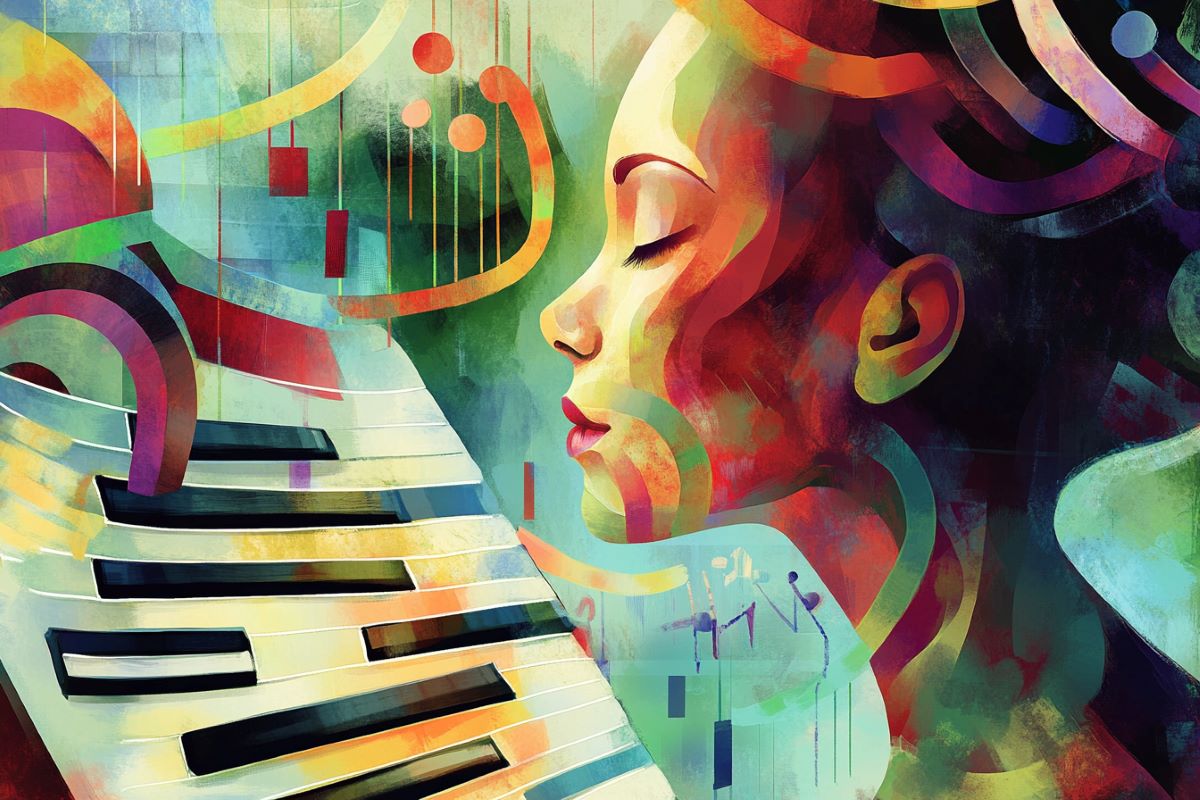Summary: A new study reveals shared genetic underpinnings between musical rhythm abilities and language-related traits, including dyslexia. Using data from over 1 million individuals, researchers identified 16 overlapping genome regions tied to rhythm and language, with key roles in brain connectivity.
Variants linked to rhythm accuracy were also associated with stronger language and reading skills, while rhythm impairments correlated with dyslexia risk. These findings offer insights into the evolutionary and neurobiological connections between musicality and communication, paving the way for personalized approaches to addressing rhythm and language impairments.
Key Facts:
- 16 genomic regions overlap between rhythm and language abilities.
- Brain connectivity, supported by oligodendrocytes, is key to these shared traits.
- Genetic links between rhythm impairments and dyslexia were identified.
Source: Vanderbilt University
In a groundbreaking study published Nov. 21 in the journal Nature Human Behaviour, researchers have uncovered significant genetic connections between human language abilities and musical rhythm skills, providing new insights into the biological underpinnings of these fundamental human traits.
The study brought together leading experts in the areas of musicality genetics and language genetics from Vanderbilt University Medical Center in close collaboration with researchers at the Max Planck Institute for Psycholinguistics in the Netherlands.
The study revealed overlapping genetic underpinnings between rhythm-related skills and language-related traits, including dyslexia.
Multiple datasets were used from over 1 million individuals. By applying advanced multivariate methods, the researchers were able to identify common genetic factors and explore their biological and evolutionary significance.
The study revealed that genetic variants associated with higher likelihood of rhythm impairments tended to be also associated with higher likelihood of dyslexia.
The reverse was also the case: Genetic variants associated with more accurate musical rhythm skills co-occurred with genes linked to higher performance on language and reading tests, and to language-related educational outcomes (i.e. grades in foreign language classes).
Combining the statistical power achieved by the large dataset and creative integration of brain data, the study team was then able to reach a new understanding of how the genes that influence our rhythm and language skills play a role in the neural circuitry supporting these traits.
The results showed 16 regions of the genome overlapped between rhythm and language, and these loci showed up as being likely to harbor genetic variants known to play a role in regulating gene expression in various types of brain cells.
According to Reyna Gordon, PhD, associate professor at VUMC and senior author on the paper, the results suggest a complex genetic and neurobiological architecture shared by human musical rhythm and the capacity to learn and maintain human language.
“We were particularly intrigued by the finding of genetic variants jointly tied to rhythm and language as being enriched for oligodendrocytes in the brain,” Gordon said.
“Oligodendrocytes are a type of brain cell that help to maintain specific connections between brain areas by helping the connecting circuitry to stay healthy and strong.”
Analyses conducted by co-author Yasmina Mekki, PhD, postdoctoral fellow at VUMC, resulted in a locus on chromosome 20 that was common to neural connectivity in the language network and rhythm.
Taken together, these findings point to connectivity as a key neurobiological factor impacted jointly by the polygenic (many-gene) bases of rhythm and language interindividual variation.
Human brains are special in their strong connectivity between auditory and motor regions.
These connections are a hypothesized co-evolved neurobiological underpinning of language and musicality, according to prior work in the field.
Additional potential evolutionary signatures highlighted by the results include a joint variant (linked to both rhythm impairment and dyslexia) occurring in the gene DLAT, which has been previously implicated in rare neurodevelopmental disorders.
Collectively, the study uncovered novel genomic factors shared between rhythm and language traits in humans and their role in development and function of the human brain.
These results contribute exciting new knowledge to the understanding of the origins of human musicality and communication skills.
Potential future clinical applications may include risk detection and personalization of treatments based on an individual’s genetic predispositions to rhythm impairments and childhood reading/language impairments.
Funding: This work was supported by National Institutes of Health grants R01DC016977 and DP2HD098859 and is the result of a collaboration with co-senior author Simon Fisher, DPhil, and the first author, PhD candidate Gokberk Alagoz (both of the Max Planck Institute) to design and carry out the study, with additional input from colleagues at the Vanderbilt Genetics Institute.
Summary genomic data from 23andMe, Inc. on rhythm and dyslexia were used for analyses.
About this genetics, music, and language research news
Author: Craig Boerner
Source: Vanderbilt University
Contact: Craig Boerner – Vanderbilt University
Image: The image is credited to Neuroscience News
Original Research: Open access.
“The shared genetic architecture and evolution of human language and musical rhythm” by Reyna Gordon et al. Nature Human Behavior
Abstract
The shared genetic architecture and evolution of human language and musical rhythm
This study aimed to test theoretical predictions over biological underpinnings of previously documented phenotypic correlations between human language-related and musical rhythm traits.
Here, after identifying significant genetic correlations between rhythm, dyslexia and various language-related traits, we adapted multivariate methods to capture genetic signals common to genome-wide association studies of rhythm (N = 606,825) and dyslexia (N = 1,138,870).
The results revealed 16 pleiotropic loci (P < 5 × 10−8) jointly associated with rhythm impairment and dyslexia, and intricate shared genetic and neurobiological architectures.
The joint genetic signal was enriched for foetal and adult brain cell-specific regulatory regions, highlighting complex cellular composition in their shared underpinnings.
Local genetic correlation with a key white matter tract (the left superior longitudinal fasciculus-I) substantiated hypotheses about auditory–motor connectivity as a genetically influenced, evolutionarily relevant neural endophenotype common to rhythm and language processing.
Overall, we provide empirical evidence of multiple aspects of shared biology linking language and musical rhythm, contributing novel insight into the evolutionary relationships between human musicality and linguistic communication traits.







